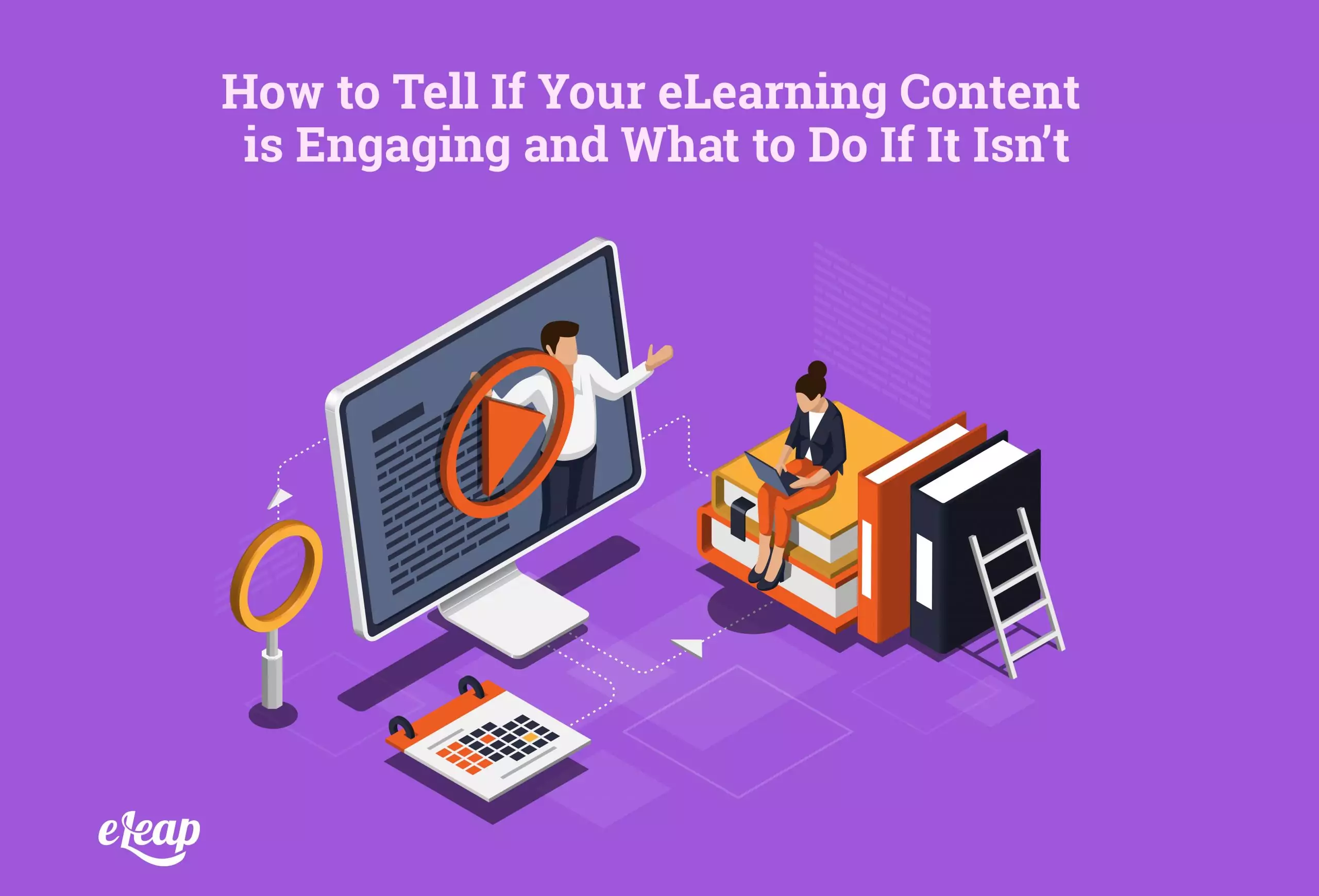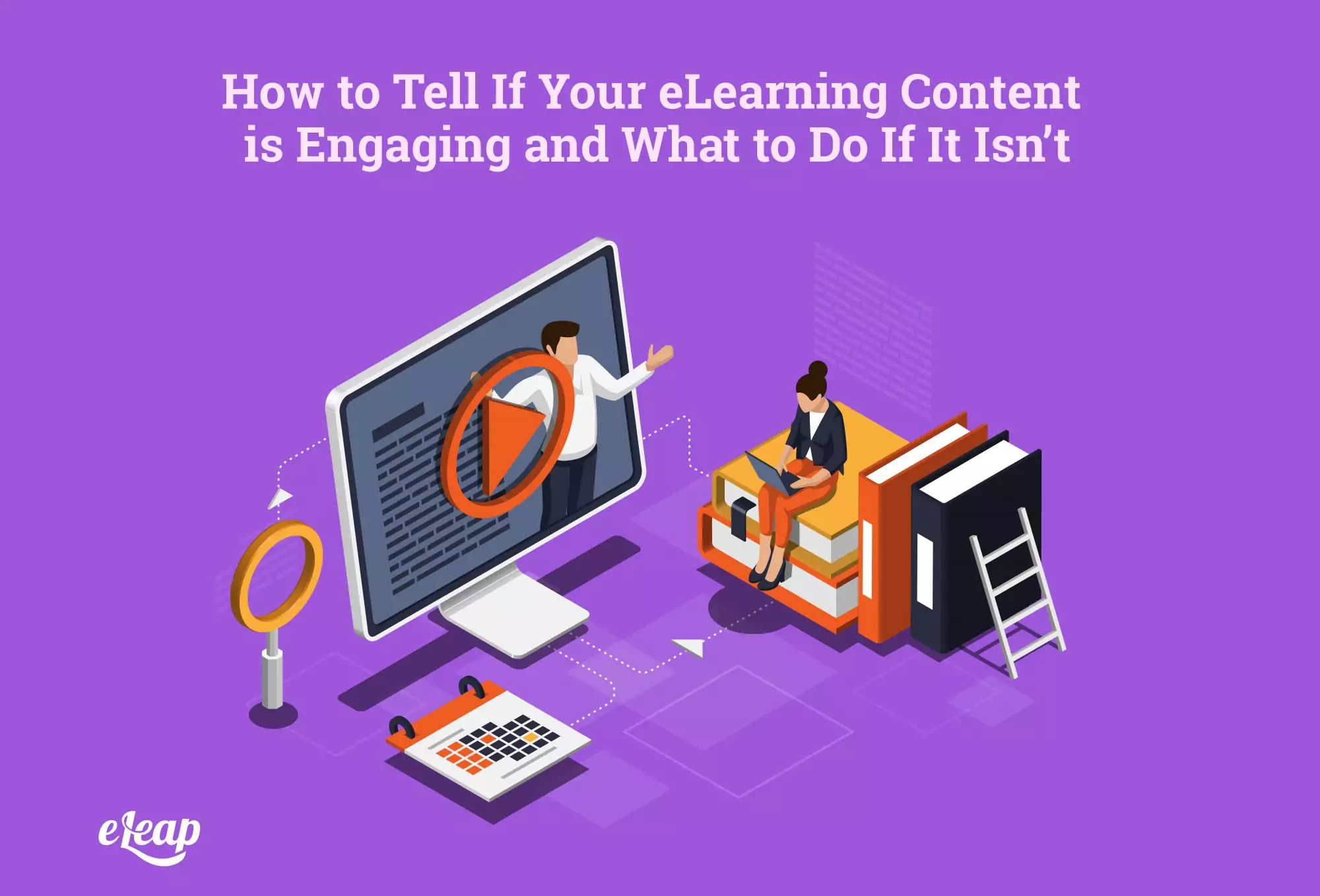How to Tell If Your eLearning Content is Engaging and What to Do If It Isn’t

eThere’s a great deal of focus on “engagement” within eLearning initiatives today. There’s a good reason for that – engagement is a critical consideration for success. If your eLearning content is engaging, learners are more likely to complete modules faster, retain information better, and be able to apply it in the real world. On the other hand, unengaging content can lead to challenges like reduced learner initiative.

The challenge comes when trying to determine if your content is actually engaging. From HR’s perspective, as well as from the point of view of any SMEs (subject matter experts) responsible for creating content, chances are good that it seems engaging. The story could be very different from your learners’ point of view, though. So, how do you determine if your content is engaging and what should you do if it isn’t?
Assessing Engagement: Signs to Look For
The first thing you need to do is assess your eLearning content’s level of engagement. To do this, you’ll need to do a bit of digging. It helps if your LMS offers robust tracking capabilities, along with in-depth reporting so you can drill down into the data and get an accurate picture.
Outcomes
Your first consideration is just good commonsense. Investigate the desired outcome of the training. Are your learners achieving the outcome they should be?
If not, it’s a good sign that there’s a problem with the content. It might not be a lack of engagement, though. If the content isn’t up to par, it may not provide learners with the information and/or skills required to achieve the outcome.
In that case, you’ll need to take a deeper dive, identify where the content falls short, determine what you can do to change the situation, and then take those steps. If the content does provide all the information necessary for learners to achieve the desired outcome, though, it probably isn’t all that engaging.
Inspiration
Engaging content has many hallmarks. One of those is that it inspires your learners. But what does that mean? How can you measure “inspiration”, anyway?
Simply put, engaging content will inspire action in your learners. What sorts of action, though? It can be almost anything, but it’s important to design your content with a desired inspirational action in mind. For instance, you might design to inspire further learning and digging deeper into a particular topic. You might inspire with the goal of getting learners to share their knowledge with other employees.
So, measuring this aspect requires several things:
- First, you need to have designed the content with a particular inspiration-based action in mind.
- Second, you (or whoever is doing the assessment) must understand what that inspiration-driven action is and what it might look like in terms of learner actions and decisions.
- Third, you need to take the time required to assess learner decisions and actions outside the LMS. Are they talking about the learning content with others? Are they applying their skills? Are they pursuing further study within the LMS or through other sources?
Only with accurate answers to those questions can you gauge whether or not your content inspires action, and then decide whether the content is engaging. What can you do when content does not inspire action? Again, it comes down to deconstructing it and finding out where things went wrong. Where is the disconnect between the inspired action on the part of the learner and the content itself?
In some cases, content that is too superficial won’t be engaging enough to be inspiring. In other instances, it could be the way the information is presented – a wall of text could prevent learners from absorbing enough knowledge for inspiration to occur in the first place.
Remarkable
Engaging content comes in all different types, shapes, and sizes. However, there is one distinguishing feature that applies across the board, whether you’re using TED-style talks, podcasts, text-based modules in your Learning Management System, interactive video, or something else – engaging content is remarkable.
What does that mean, for eLearning content to be remarkable, though? Simply put, it means that your learners talk about it. They get excited about it. It creates a definite, positive experience that transcends the bounds of what’s considered “normal” in a learning environment.
If you dig deeper, you’ll find that all remarkable content has something in common: it tells a story. Often, that element is missing from today’s learning management systems. However, remarkable content also hits the mark in other ways, including:
- It’s the right duration – great content can be as long as it needs to be to tell the story. There is no specific length.
- It’s created with passion – remarkable content requires more than just SME input; it requires a deep passion for the content being created. That comes through clearly, engaging learners on a deep level.
- It’s presented in learner-focused styles – too often, content is created and delivered in a format that fits the creator’s needs or preferences, not the learners’. Remarkable content fits the learners’ needs perfectly.
Impactful
Finally, engaging eLearning content is impactful. What does that mean, though? It should be easy to see the value of what you’ve created. You should be able to measure the ROI generated by the content’s impact.
Measuring the impact of L&D initiatives can be challenging, but it can be done. It begins by assessing the desired outcomes and then tying those to positive changes the business has experienced. For instance, was better customer service the desired outcome? If that was achieved, are your customers more loyal or satisfied? That can manifest in increased customer retention, reduced costs, and other highly measurable metrics that all speak to the impact of the training.
Engaging eLearning Content Is Not Optional
At the end of the day, creating engaging content is possible, but it requires intentionality and the ability to measure and adjust as you go. Creating remarkable content that drives desired outcomes and inspires action is critical. What ways have you found to create engaging content? Share your experiences with us in the comments below.